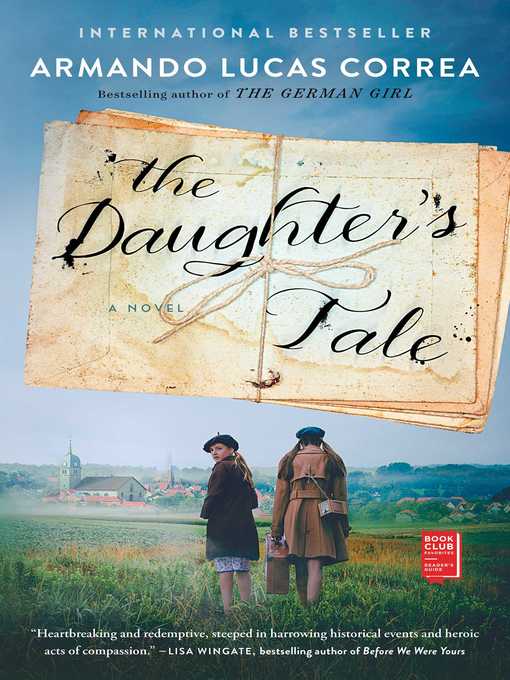
The Daughter's Tale
A Novel
کتاب های مرتبط
- اطلاعات
- نقد و بررسی
- دیدگاه کاربران
نقد و بررسی

March 11, 2019
Impossible choices faced by loving parents lie at the heart of this underwhelming tale by Correa (The German Girl). The story opens in New York City in 2015, when the elderly Elise Duval receives a phone call from a strange woman who had recently been in Cuba and found some letters that belong to Elise. The narrative then jumps back to Berlin, starting in 1933 and continuing through 1947 in France. After Julius Sternberg, a Jewish doctor, dies in a prison camp, his wife Amanda carries out his wishes that the rest of the family leave Germany. The plan is for their two daughters, four-year-old Lina and five-year-old Viera, to live in Cuba with an uncle. Unable to secure the necessary travel documents to accompany them, Amanda will go to an old friend, Claire Duval, in France until it’s safe to bring the girls back. At the last minute, Amanda decides Lina is too young to go and sends Viera alone. Amanda and Lina’s new life in Haute-Vienne with Claire and her daughter, Danielle, turns dangerous when WWII erupts and the Germans arrive in France. Lina and Danielle hide out in an abbey, but in 1944, the Germans come looking for weapons and one of their missing soldiers. While Correa convincingly evokes the perils of occupied France, his characters rarely move beyond being one-dimensional, and the hasty conclusion about how the war ended for Viera and Lina is unsatisfying. Readers interested in WWII fiction have plenty of better options elsewhere.

March 1, 2019
A Holocaust chronicle touching on survivor's guilt and the force of family ties.In his second novel, Correa (The German Girl, 2016) tells the story of Lina Sternberg, a Jewish girl born in Berlin in 1935 to a heart doctor and his spirited wife, Amanda, owner of a bookshop destroyed by the Nazis. Lina endures terrible suffering and loss during the war but eventually settles in America and starts a new life. She suppresses the painful memories of her early days and almost manages to shed her true identity. The first part of the book, spanning the years 1933 to 1942, focuses on Amanda and her frantic efforts to save Lina and her older sister, Viera, from the Nazi horrors. Viera is shipped off to Cuba, where Amanda's brother lives; Lina and her mother hide out in a French village under the protection of a Christian woman named Claire, but they wind up in a horrific French internment camp. Amanda, however, engineers a daring escape for her daughter, who is reunited with Claire and her daughter, Danielle. Though grim, this part of the narrative is gripping and stirring. The second part is also eventful, but it meanders and lacks focus. Plus, the young Lina (now called Elise), unlike her mother, is not a strong enough character to anchor the action. There is vivid writing, especially in the first part, and some memorable images--for instance, Amanda's talismanic botanical album, filled with hand-painted pictures of plants and flowers. As in The German Girl, the real-life 1939 voyage of the ocean liner St. Louis from Hamburg to Havana figures in the plot; here, the 1944 S.S. massacre of villagers in the tiny French town of Oradour-sur-Glane in the Limoges region also plays a role.Though it's sometimes involving and insightful, Correa's novel is ultimately too diffuse to have the intended impact.
COPYRIGHT(2019) Kirkus Reviews, ALL RIGHTS RESERVED.

























دیدگاه کاربران